KATE BARGER WEATHERS, DVM, Director of Animal Welfare, Cobb-Vantress, Inc.
David Bayvel, former director of animal welfare for the New Zealand Ministry of Agriculture and Forestry, once said, “Animal welfare is a journey, not a destination.”
This statement not only applies to the evolution of science and research for animal welfare, the understanding of animal behaviour, and the use of technology to advance animal welfare monitoring and positive outcomes, but it is also appropriate when considering the progression of genetics and poultry breeding. Meaningful changes in broiler genetics can only be realised in 3 to 5 years from when geneticists choose the ideal breeding chickens to when broiler outcomes are seen throughout the world.
The continual increase in worldwide poultry consumption has created great opportunities and challenges for poultry companies. In many countries, poultry consumption has outpaced those of beef and pork so that the actual quantity of poultry meat consumed per person per year continues to rise.
Around the world, poultry is accepted as a healthier option to other animal proteins. It is not an object of any religious or cultural restrictions, unlike beef and pork.
Poultry is also an affordable meat source. Due to the general adaptability of commercial poultry breeds, flocks can be efficiently grown in almost any environmental condition, using almost any feedstuff and under various management or husbandry programmes.
Global demand for poultry meat combined with expectations for efficient poultry breeding stock present a tremendous challenge for breeding companies out to maintain a balance between health and welfare traits and performance outcomes of each new generation of chickens.
Thirty years ago, more than a dozen poultry breeding companies supplied the poultry industry with broiler breeder genetic stock. They were then inspired to focus their selection on improving conformation, carcass yield and feed conversion.
As demand for poultry meat increased, along with the world’s population, genetics companies were expected to provide broilers with proven performance and yield value, which are increasingly efficient, and have robust characteristics that would allow them to thrive in various global conditions.
Three top breeding companies have survived so far and they are those that actively work to balance health and welfare traits with performance (egg production, feed conversion, meat yield, etc.), bird traits popular in the world market.
Increased production efficiencies and rising broiler meat availability and affordability do not sit well with non-governmental organisations which, during the past five years, have criticised poultry breeding companies for helping intensify poultry production. It may be easy for these critics to be concerned about faster growth, improved feed conversion, and increased meat yields that are all linked to performance efficiency in broilers.
Unfortunately, these same groups do not highlight the health and welfare advantages that have allowed broilers to become so efficient. These advantages include: years of progressive genetic selection, improved veterinary and sanitary standards, enhanced poultry nutrition, advanced ventilation equipment and innovative technology that allows farmers and scientists to better understand bird health, flock activity and poultry behaviour so that the industry can better meet the needs of the bird as it grows and develops.
For example, with advanced technology, the primary breeders have been able to reduce the incidence of metabolic diseases in poultry that can be exacerbated by sub-optimal nutrition, environmental and geographical factors. Without the long-term focus and commitment of the POULTRY NUTRITION BEYOND PERFORMANCE FOCUS technical JANUARY-FEBRUARY 2017 / LIVESTOCK & FEED Business 3535 primary breeders to improving health and welfare traits, broilers would not be as efficient or as robust as they are today.
Raising and producing healthy birds for our customers is our main goal at Cobb-Vantress, Inc. As one of the premier broiler breeder genetics companies, Cobb is focused on using innovative research and technology to select the best birds for the next generation of chickens.
To achieve continued genetic progress, we evaluate each pure-line chicken for traits that will positively improve the health, welfare and production of each subsequent generation. More than half of the 55+ traits involved in our selection programme are directly related to health and welfare characteristics.
The welfare and performance outcomes of breeder and broiler chickens are based on management (daily care and husbandry provided for the birds), environment (nutritional, veterinary and biosecurity provisions to safeguard flock health and welfare), and genetics.
While the outcome of this multifactorial equation (G x M x E) is complex and may vary around the world, we know that genetic selection for improved health, welfare and performance traits is a serious responsibility for poultry genetics companies.
Choosing individual chickens for the next generation is important for our goal of improving the physical characteristics and welfare outcomes for future breeder and broiler chickens. The first steps of this genetic selection process involve traditional evaluation of each bird. Specifically, trained farm staff, scientists and PhD geneticists carefully choose the most desirable pure-line birds by evaluating physical and behavioral characteristics of individual chickens. This selection is known as the phenotypic selection.
This on-farm selection process integrates a ‘hands-on’ approach to evaluation of birds with extremely sophisticated technology commonly used in human medicine such as ultrasound, lixiscope, and pulse oximeter devices. Examples of items included in the phenotypic selection include:
• Physical examination – evaluation of chickens for physical features, leg straightness, and body weight. This step improves welfare quality by removing any pure-line birds with undesirable anatomical and physical characteristics.
• Leg conformation and gait – selection of chickens for stance and walking ability. This selection feature improves bird mobility by reducing the incidence of skeletal abnormalities.
• Cardiovascular function – assessment of chickens for blood oxygen saturation. This selection feature improves the cardiovascular function by selecting the chickens with the best values.
• Skeletal integrity – examination of the bone structure of the legs of chickens with advanced technology. This selection feature improves leg health by reducing the incidence of bone abnormalities that may develop during the early growth period of chickens. Phenotypic selection has been and will continue to be used to improve desired traits in domesticated species. However, due to the challenges of meeting food security and food availability demands for the world, and due to the commitment to improving welfare outcomes for each generation, we incorporate advanced technology and innovative methods to improve the genetic selection of individual chickens.
Precise breeding and genetic selection will continue to be an integral part of improving the welfare of broiler breeders and broilers. With continued advances in technology and understanding of the genetic background of biological and performance traits, breeding companies will be able to increase the accuracy of their choices during phenotypic selection and genetic merit evaluations.
health by reducing the incidence of bone abnormalities that may develop during the early growth period of chickens. Phenotypic selection has been and will continue to be used to improve desired traits in domesticated species. However, due to the challenges of meeting food security and food availability demands for the world, and due to the commitment to improving welfare outcomes for each generation, we incorporate advanced technology and innovative methods to improve the genetic selection of individual chickens.
After selection based on physical features, Cobb geneticists then estimate the genetic merit of each chicken based on a combination of performance data, family history and the DNA profile. Innovative technology, including DNA analysis, is used by Cobb scientists to precisely identify the healthiest and best pure-line chickens.
The resulting genetic merit estimate is used to select the best chickens for multiple health, welfare and performance criteria. In other words, the chicken with the best individual performance data may not be selected to be used in the breeding program if the genetic merit evaluation highlights negative traits for health and welfare. As a result, genetic selection can be used to positively impact the future welfare outcomes of each generation of chickens while also selecting against undesirable traits in an individual pure-line chicken or family of pure-line chickens.
In addition to the on-farm phenotypic and genetic selection process, we also partner with premier scientists on pioneering research focused on improving poultry health and welfare. For example, some partnerships include the evaluation of innate disease resistance with the goal of identifying gene markers for genetic resistance for a range of diseases.
Other partnerships involve studying links between flock performance, nutrition and environmental challenges to better understand the impact of genetic selection on the global adaptability of our chickens. Additional partnerships involve studying the behavior of chickens and using computerized models to evaluate the center of mass and the actual gait of chickens as they move.
Precise breeding and genetic selection will continue to be an integral part of improving the welfare of broiler breeders and broilers. With continued advances in technology and understanding of the genetic background of biological and performance traits, breeding companies will be able to increase the accuracy of their choices during phenotypic selection and genetic merit evaluations.
In short, it is an exciting time to be part of this journey of understanding animal welfare and the journey of genetic selection to improve the health and wellbeing of poultry.


